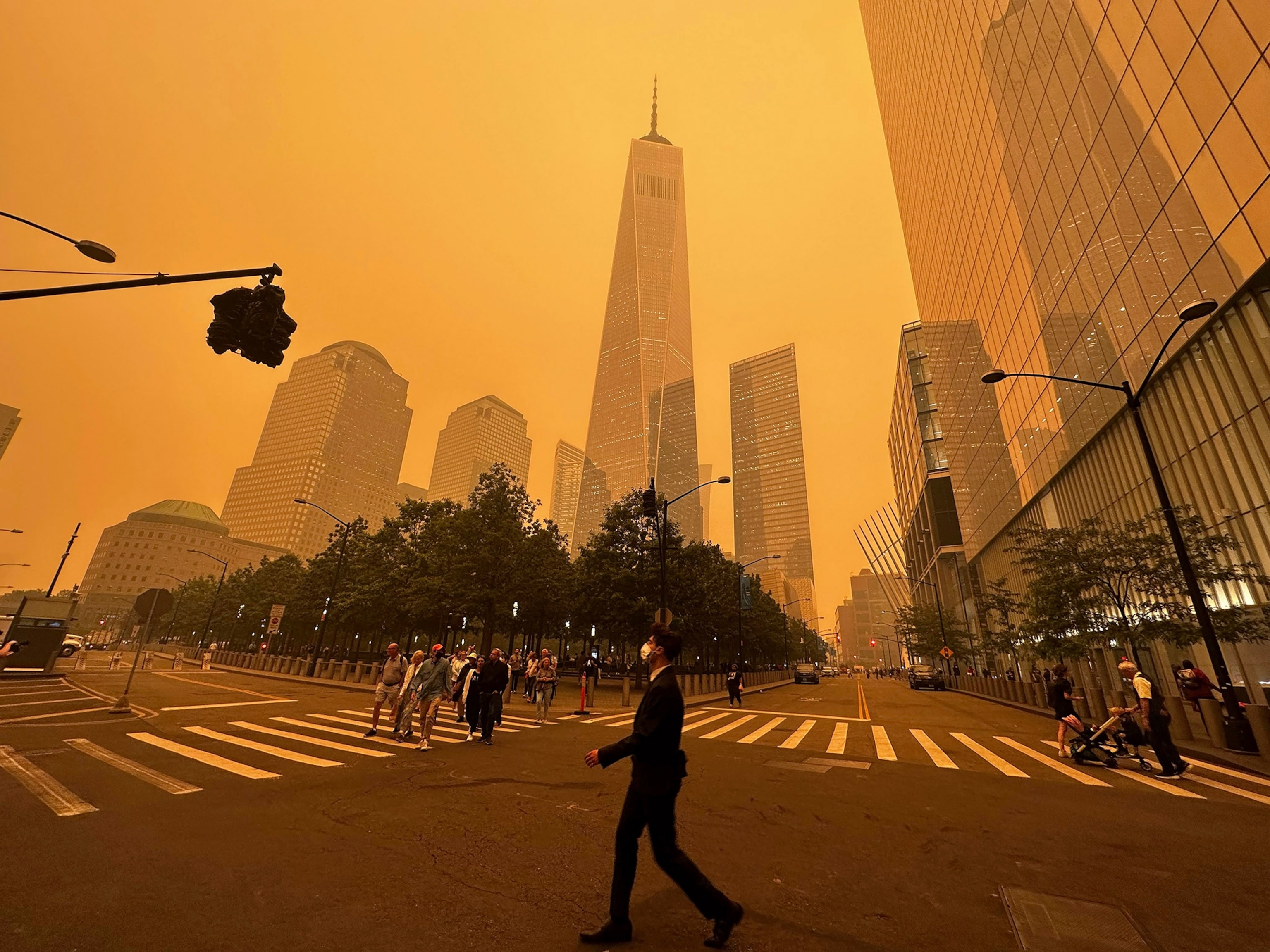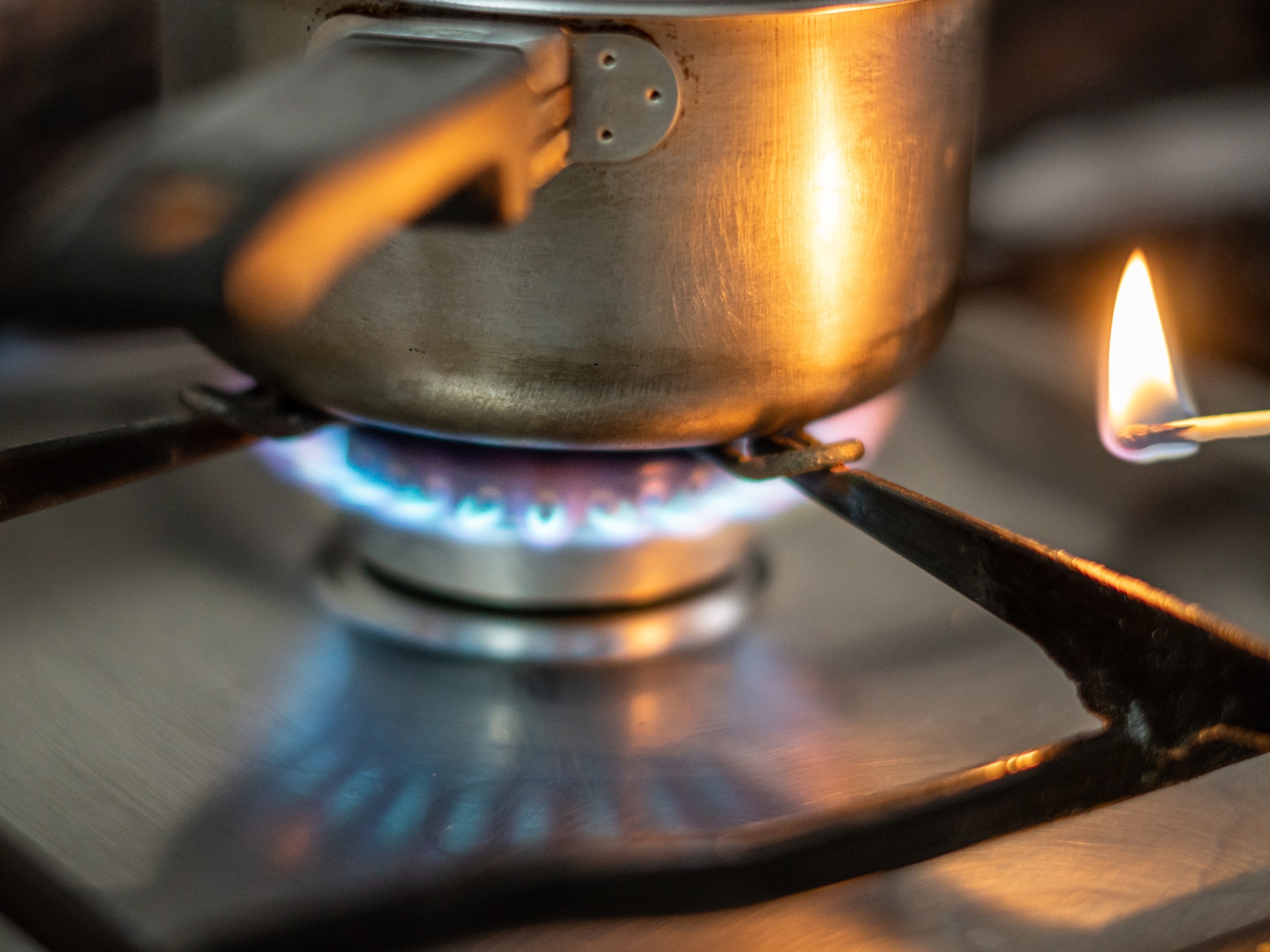
What the Air Quality Index measures—and what to do when it’s code red
As wildfire smoke from Canada descends on the northeastern U.S., many Americans are getting local alerts from the Environmental Protection Agency’s AQI. Here’s what all those colors mean.
If you live on the U.S. East Coast, your phone might have been lighting up all day with alerts about your local air quality. Much of the region is under a “code red” alert as a thick blanket of smoke continues its spread south from wildfires in Canada. New York City had some of the worst air quality in the world on Tuesday with levels approaching not just unhealthy but very unhealthy.
But what exactly is a code red alert—and what risk does all that air pollution pose to your health? Here’s how to decode the Air Quality Index.
What is the Air Quality Index?
The term “code red” comes from the U.S. Environmental Protection Agency’s color-coded Air Quality Index (AQI), which tracks five major air pollutants: ground-level ozone, carbon monoxide, sulfur dioxide, nitrogen dioxide, and particle pollution. This last category, also known as PM2.5 and PM 10, is what is typically found in wildfire smoke.
(An urgent question hangs over catastrophic wildfires: What's in that toxic smoke?)
The AQI converts concentration measurements for each of these pollutants onto a common scale that communicates the level of hazard on any given day. The color-coded scale stretches from 0 to 500 and is split across six categories, from good to hazardous.
If your local air quality is green or yellow (100 or below), it means there’s little reason to fear air pollution. Air officially becomes unhealthy for at-risk groups—such as the elderly or people with asthma—when AQI is orange, or above 101. And it becomes unhealthy for all populations at 151—or code red. Purple and maroon indicate even higher levels of risk.
According to the EPA, metro areas with a population of more than 350,000 people are required to report their AQI each day, and many other areas do so voluntarily.

What should you do when the air is polluted?
This color-coded scale is designed to help you keep yourself safe from air pollution. But the EPA’s guidance for how to do that depends in part on what kind of pollutant is in the air.
Wildfire smoke is particularly dangerous because it’s filled with noxious gasses and tiny particles that come from construction materials in burned buildings, as well as from trees and plants. According to a study in the Journal of the American Heart Association, wildfire smoke is linked to respiratory and cardiovascular illnesses—and those tiny particles present the biggest problem.
(How breathing in wildfire smoke affects the body.)
Known as PM2.5 because they are smaller than 2.5 micrometers in diameter, the particles can penetrate deep into the lungs and can’t be broken down by the body’s immune system. There’s also some evidence that they can enter the bloodstream and cause widespread inflammation.

If the AQI for particle pollution hits red, the EPA recommends that sensitive groups avoid long or intense outdoor activities while everyone else should take breaks and otherwise avoid too much strain outdoors. In the purple range, 201 to 300, sensitive groups should avoid all physical activity outdoors while others should avoid long or intense activities. Finally, if the AQI hits 301, or maroon, it signals emergency conditions: Even healthy people are warned to avoid all physical activity outside; sensitive groups are instructed to remain indoors and limit activity even there.
It’s unclear what air quality levels the East Coast will endure in the days ahead as wildfires continue to rage in Quebec. But one thing is for sure: Don’t ignore those alerts on your phone.
You May Also Like
Go Further
Animals
- How can we protect grizzlies from their biggest threat—trains?How can we protect grizzlies from their biggest threat—trains?
- This ‘saber-toothed’ salmon wasn’t quite what we thoughtThis ‘saber-toothed’ salmon wasn’t quite what we thought
- Why this rhino-zebra friendship makes perfect senseWhy this rhino-zebra friendship makes perfect sense
- When did bioluminescence evolve? It’s older than we thought.When did bioluminescence evolve? It’s older than we thought.
- Soy, skim … spider. Are any of these technically milk?Soy, skim … spider. Are any of these technically milk?
Environment
- Are the Great Lakes the key to solving America’s emissions conundrum?Are the Great Lakes the key to solving America’s emissions conundrum?
- The world’s historic sites face climate change. Can Petra lead the way?The world’s historic sites face climate change. Can Petra lead the way?
- This pristine piece of the Amazon shows nature’s resilienceThis pristine piece of the Amazon shows nature’s resilience
- Listen to 30 years of climate change transformed into haunting musicListen to 30 years of climate change transformed into haunting music
History & Culture
- U.K. treasure hunters are finding ancient artifacts—who gets to keep them?U.K. treasure hunters are finding ancient artifacts—who gets to keep them?
- Meet the original members of the tortured poets departmentMeet the original members of the tortured poets department
- Séances at the White House? Why these first ladies turned to the occultSéances at the White House? Why these first ladies turned to the occult
- Gambling is everywhere now. When is that a problem?Gambling is everywhere now. When is that a problem?
Science
- Should you be concerned about bird flu in your milk?Should you be concerned about bird flu in your milk?
- Here's how astronomers found one of the rarest phenomenons in spaceHere's how astronomers found one of the rarest phenomenons in space
- Not an extrovert or introvert? There’s a word for that.Not an extrovert or introvert? There’s a word for that.
- NASA has a plan to clean up space junk—but is going green enough?NASA has a plan to clean up space junk—but is going green enough?
Travel
- Germany's iconic castle has been renovated. Here's how to see itGermany's iconic castle has been renovated. Here's how to see it
- This tomb diver was among the first to swim beneath a pyramidThis tomb diver was among the first to swim beneath a pyramid
- Food writer Dina Macki on Omani cuisine and Zanzibari flavoursFood writer Dina Macki on Omani cuisine and Zanzibari flavours
- How to see Mexico's Baja California beyond the beachesHow to see Mexico's Baja California beyond the beaches




